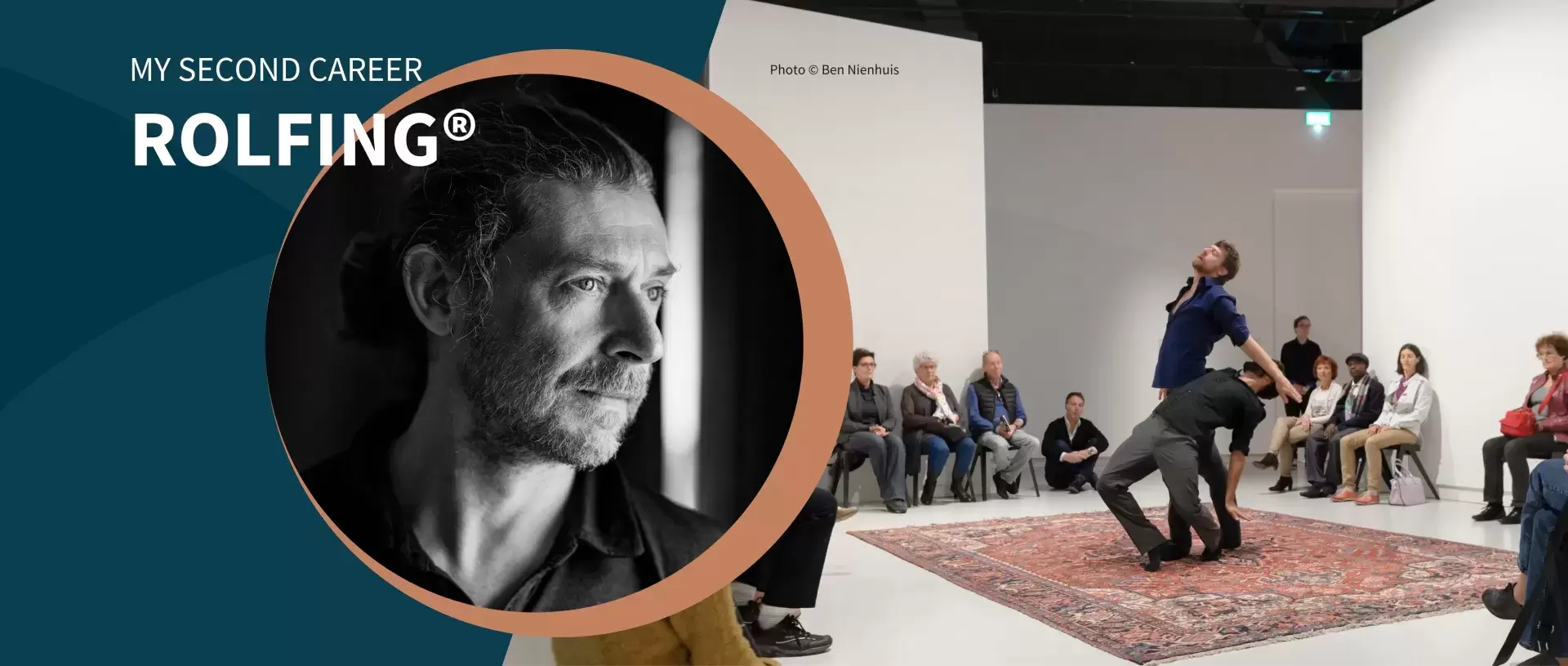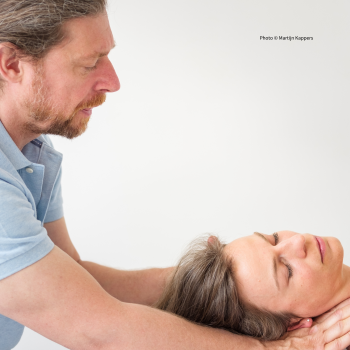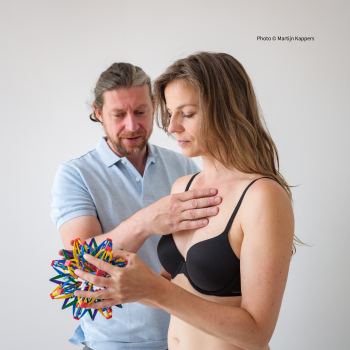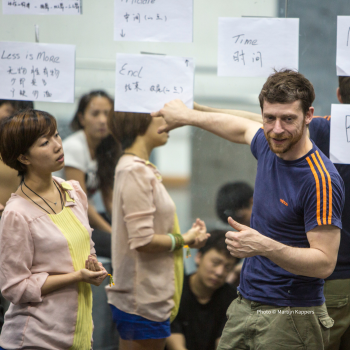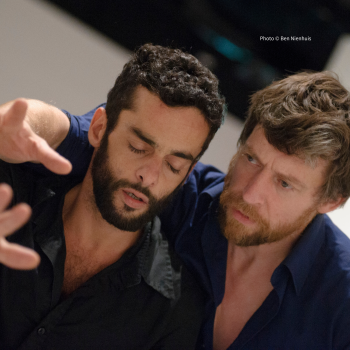By professional dancer and Certified Advanced Rolfer® Miquel De Jong
When I embarked on my career as a dancer, becoming a Rolfer® was the furthest thing from my mind. Life, however, has a way of leading us down unexpected paths, and that's precisely what happened to me. While dedicating many years to perfecting my craft as a dancer, I found myself constantly aiding my fellow colleagues in alleviating their pain.
Interestingly, I had no formal education in massage or any other bodywork techniques; my actions were guided purely by intuition and instinct. I always preferred dancing in duets, and this inclination granted me exceptional partnering skills. I developed a keen sense of someone else's balance, flow, weight shift, timing, and energy, which I believe bestowed upon me the gift of a "listening touch."
When I knew I wanted to pursue a career in bodywork, I wasn't one for conventional learning methods. The idea of studying and applying preset techniques in various forms of bodywork didn't resonate with me; I sought something more profound and authentic.
It was through a choreographer and Rolfer named Russell Malliphant that I first learned about Rolfing® Structural Integration. Russell's approach to movement differed significantly from what I was accustomed to; he explored diverse styles like improvisation, contact improvisation, capoeira, acrobatics, as well as body-mind techniques like yoga, tai chi, and meditation. This exposure to a way of movement beyond mere technique left a lasting impression on me. One day, as I attempted to relieve Russell's shoulder pain, he gazed at me and exclaimed, "You have to become a Rolfer." His words served as the catalyst that led me to Munich to study Rolfing.
Dancing & Rolfing: The Perfect Harmony of Two Professions
In the three-week orientation course, I found the bodywork modality I had been searching for all along. After completing my Rolfing training, I started practicing as a Rolfer while continuing my career as a dancer.
“Surprisingly, I discovered that the two professions complemented each other beautifully. As a dancer, I possessed an innate understanding of movement and the body's potential, and as a Rolfer, I could unlock that potential for others, enabling them to move with greater ease and efficiency.”
I have been a "Certified Advanced Rolfer" for over 15 years now and am on my way to becoming a Rolfing instructor. The connection between my dance background and Rolfing has blossomed into something truly remarkable.
I now incorporate Rolfing insights into my dance and movement coaching and, reciprocally, apply my movement expertise in my Rolfing practice.”
For instance, I observe my clients' movements, posture, and weight shifts, allowing me to apply specific techniques to improve their alignment and balance. Furthermore, my dance background has taught me to appreciate the emotional aspect of movement. I understand that how we carry ourselves goes beyond mere posture; it can deeply impact our emotions and mental states. This understanding allows me to work with my clients on a more profound level, addressing not only their physical well-being but also their emotional and mental harmony.
Improvisation, Sensitivity, and Rolfing: A Unique Approach to Movement
Before venturing into Rolfing, my career revolved around dance. I received my training at the Royal Conservatory in The Hague, starting from a tender age of ten, and in 1989, I proudly graduated with a diploma of higher professional education of dance. My journey took me to Scapino Ballet Rotterdam, where I danced with great enthusiasm, and later, I became the first soloist at the prestigious modern dance company, L'Opera de Lyon in France. It was during my time there that I had the privilege of collaborating with esteemed choreographers like William Forsythe, Jiri Kylian, Mats Ek, and Ohad Naharin.
In the captivating world of L'Opera de Lyon, I had the fortune of crossing paths with Russell Malliphant. Russell's approach to dance unveiled a whole new realm for me, emphasising the power of improvisation and compositional tools. Through this method, he encouraged dancers to trust their instinctive knowledge, allowing their bodies to move naturally and pre-reflectively while fully engaging with the present moment. For me, it was a revelation, especially after having trained in a classical-based technique for so many years. I had to leave the familiar behind and wholeheartedly embrace the notion that my previous training would serve me well in the present moment.
Fuelled by my experiences with Russell in London, I discovered a newfound passion for teaching improvisation and developed my own unique method called ImproXchange. This method is comprised of two essential components: pre-reflective movement and consensus composition. In my teachings, I strive to lead dancers towards a profound connection with the pre-reflective state of movement, encouraging them to explore the poetic play of human encounters through the art of improvisational human contact.
I guide them in developing heightened sensitivities to physical nuances and an acute awareness of moment-to-moment functional aspects through tuning into proprioception, our physical and emotional experience of the body. In essence, I encourage them to seek the essence of meaning in movement, aiming to create dances that resonate with us physically, emotionally, and spiritually.
Dancing into the Future: A Rewarding Dual Career
My dance career was a personal voyage of discovery; the destination turned out to be a liberation. Discovering Rolfing was a bit the same! I found in Rolfing a profound and intelligent foundation that allowed me to harness the resources I already possessed and adapt my approach to each client in a unique and personalised manner.
Working in both professions gives me a sense of balance and allows me to explore different parts of myself.
I find that dance and Rolfing tie together in interesting ways, especially in the way they both emphasise the importance of the body and how it moves. Rolfing has also given me a deeper understanding of how the body works and how it can be transformed.”
It's been fascinating to see how my dance background has shaped my Rolfing approach and how I can use that knowledge to better serve my clients.
Overall, combining careers was a rewarding decision. I'm grateful for the experiences that led me here and for the opportunity to continue learning and growing in both dance and Rolfing.”
Indeed, I perceive this as more of a career extension or development rather than a complete change. While my primary income now comes from Rolfing, the fusion of both dance and Rolfing has allowed me to recognise the importance of connecting with the body on a deeper level.
This profound connection leads to a greater sense of awareness and comprehension not only during movement but also in everyday life. The principles of Rolfing, such as aligning the body's structure and enhancing range of motion, prove invaluable in dance, bolstering performance and preventing injuries. At the same time, dance has taught me the value of creativity and exploration, which I now incorporate into my Rolfing sessions to help clients explore new dimensions of movement and embodiment.
Becoming a Rolfer was one of the best decisions I have ever made.”
Rolfing has allowed me to continue exploring movement and the body in new and exciting ways, while also helping others to do the same. Working in two professions can be challenging, but I love the diversity and the way they complement each other. Both dance and Rolfing have taught me invaluable lessons.
Working in both professions keeps my work fresh and exciting, and I feel like I can make a positive impact on people's lives in different ways. I am excited to continue growing and learning in each of them.”
Author: Certified Advanced Rolfer® Miquel de Jong – Netherlands
Editing: Sabine Becker
Photos: Martijn Kappers , Hans Gerritsen, Ben Nienhuis
Visit Miquel de Jong’s website
Did you know?
Rolfing training is now coming to the Netherlands. First course starting 15th September 2023 - secure last spots! Check out all courses and register here.
More information on how to become a Certified Rolfer®.
Learn more about Rolfing.
Find a Rolfer near you.
Want to know more?
Sign up for our newsletter and receive regular information about Rolfing® Structural Integration.

